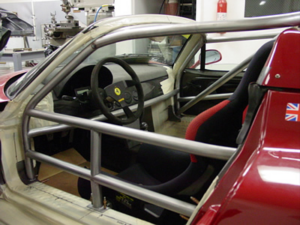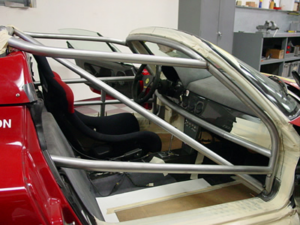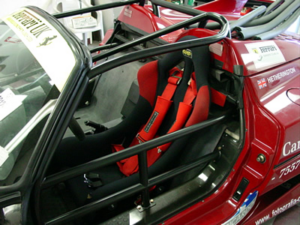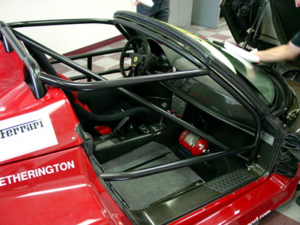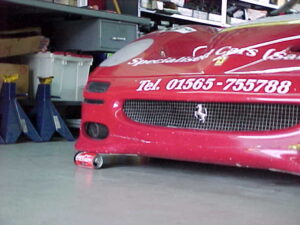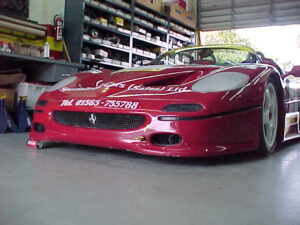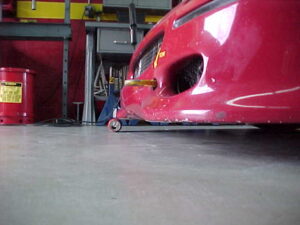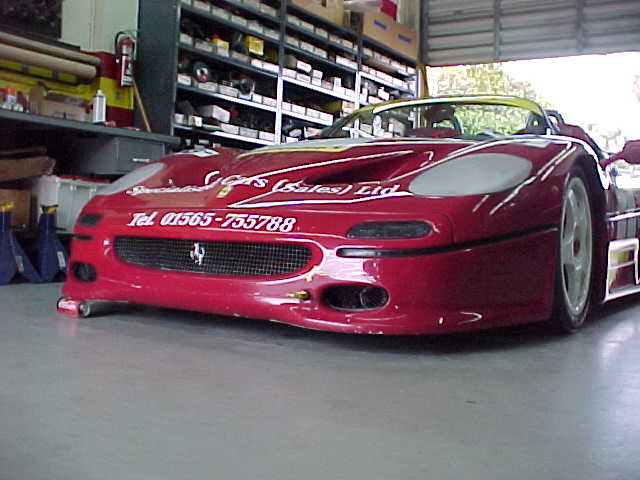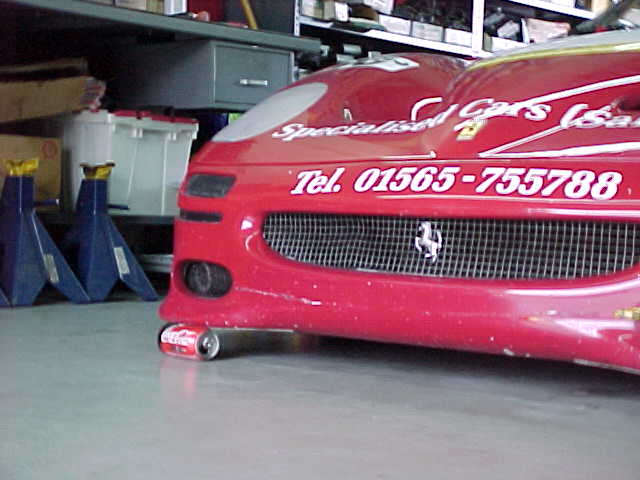Earlier this week we reviewed the byzantine process, way back in 2000 and 2001, of getting the DOT approval to import Ferrari F50 s/n 103496, an F50 which had been converted to racing specs and then run in forty different races in the 1998, 1999 and 2000 Maranello Ferrari Challenge and the 1998 and 1999 Porsche vs. Ferrari Challenge.
On 09 Nov. of 2000 Ferrari F50 s/n 103496 had arrived at the Miami airport but remained in Customs awaiting both DOT and EPA exemption approval. After a mere three-and-a-half months, the DOT decided our F50 was indeed a race car and acceptable for importation into the US under the race car exemption.
The release letter from the DOT was received on 22 Feb. of 2001, and so we naively expected the EPA to rubber stamp the DOT’s decision. This proved to be supremely optimistic on our part as the only way a bureaucrat can ever get into trouble is by saying “yes”, and so to justify their miserable existence the EPA decided to ask the same questions as the DOT, but in rephrased or reworded bureau-babble.
As an example, while the DOT had wanted an explanation of the work done to convert this car into a race car, on 02 Feb., 2001 the EPA asked for a breakdown of the estimated cost to convert the car back to a street car. In theory this was because the DOT was concerned about the intent of the car’s manufacturer, while the EPA focuses on the roadability of the vehicle.
On 06 Feb., 2001, Specialised Cars in England, which had prepared F50, s/n 103496 for racing, provided yet another detailed letter outlining the substantial cost to convert the car back to a street car. They also stated that, because of its well-documented race history, converting this well-raced F50 into a street car would be financial folly.
On 18 March the EPA asked why the car sat high off the ground. On March 19, Andrew Turner of Mortimer, Houghton and Turner (MHT), the authorized Ferrari dealer in England who had sold us the F50, supplied a letter explaining that the car was raised as high as possible on its adjustable suspension and fitted with the taller rain tires to prevent damage in shipping. The EPA was not satisfied with this explanation. The EPA decided that the car had to be lower to be accepted as a race car, but failed to define “lower”.
On 28 March our attorney, Lance Beyer, who specializes in matters relating to vehicle importation, insisted the EPA give us a definitive ruling on how low is low enough. John Guy, an engineer with the EPA, then invented the “Coke-can” test. If a standard Coke can will roll under a car, it cannot be a race car; if a Coke can cannot roll under a car, it must be a race car!
On 30 March of 2001 US Customs allowed the F50 to be taken to Shelton Ferrari of Fort Lauderdale, Florida, to be lowered from its transportation settings and pass the Coke can test. Shelton lowered the suspension and fit racing slicks into place, lowering the car by 3 inches. Digital photos of the car passing the Coke can test were dutifully submitted to EPA.
On 23 April of 2001 the EPA, in a fit of paranoia, stated that since digital photos can be altered they needed “hard” photos of the F50 passing the Coke can test, along with a statement from Shelton Ferrari affirming the car to be in race condition, the tires to be at racing pressure and to have had no additional weight added. Glossy 5″ x 7″ photos and the appropriate cover letter were sent to the EPA.
On 15 May F50 s/n 103496 passed the infamous Coke can test, but was kicked sideways to Len Lazarus at EPA, who expressed his concern that this F50 looked just like any other F50 and that EPA had already turned down previous requests to import F50s as race cars. Lazarus wanted photos substantiating that the car had a “racy looking” dashboard and interior. Once again, new copies of photos already supplied to both DOT and EPA were obtained by Andrew Turner of MHT Ferrari in England and dutifully re-supplied to EPA.
On 29 May the F50 passed the “racy looking” dashboard test, but next invented a roll cage test, since the EPA had decided that real race cars have roll cages, not roll hoops. The EPA had already allowed entry of two F50 GTs under the race car exemption, so we had Attorney Beyer ask the EPA if we were to build a roll bar to match the bar fitted to the F50 GTs already imported, would this final test appease EPA?
On 02 June the EPA denied they ever allowed the two F50 GTs to be imported, as they had no records of these cars. Therefore, these cars must have been smuggled. We advised EPA that we had already sent both the DOT and the EPA exhaustive information on the two F50 GTs already imported but were told “the file is too thick” to take the time to go through. If we wished to prove the two F50 GTs were legally imported, we must re-send the EPA’s own paperwork on these cars to the EPA. We resubmitted the Customs and DOT paperwork, and the EPA subsequently agreed that two F50 GTs were indeed legally entered. On 07 June the EPA agreed to allow F50 s/n 103496 entry if we matched the F50 GT race car features, especially the roll cage, of the two “race versions” already approved and imported.
On 15 June we forwarded detailed digital photos from Art Zafiropoulo, owner of F50 GT s/n 001, showing the roll cage in his F50 GT. On June 18, Len Lazarus reviewed EPA’s importation file on the Zafiropoulo car. He agreed EPA would generate a final “this is what you have to do to gain approval” letter.
A month later, as of 15 July, we had still not received a final “this is what you have to do to get approval” letter from the EPA. From our perspective, a reasonable test to determine whether F50 s/n 103496 is actually a race car would be to see how quickly it could roll over a herd of running EPA bureaucrats.
On 29 Oct., after four plus months of seemingly-endless faxes and phone calls back-and-forth between Lance Beyer, the EPA, US Customs and our customs importer, the folks at US customs agreed to release F50 s/n 103496 for two weeks to Kevin Jeannette of Gunnar Racing in West Palm Beach to build and install a roll cage identical to the roll cage installed in F50 s/n 001 and submit photos to the EPA.
In only a week Gunnar Racing was able to mask and cover the door and sill opening, build and fit (but not install) a full roll bar race cage and submit photos to the EPA. Because the door and sill openings were well covered in masking tape the sills still show as-new twenty-three years later.
16 Nov., 2001, a year and a week after F50 s/n 103496 landed at the Miami airport, the EPA issued their release and F50 s/n 103496 was added to Preston Henn’s collection, with the occasional appearance at Cavallino events. Preston Henn died on 30 April of 2017 and on 12 Feb., 2019 Ferraris-Online sold F50 s/n 103496 to her third owner who commissioned a full down-to-a-bare-tub $770,000 plus restoration by Chris Dugan of Dugan Enterprises, after which F50 s/n 103496 was shown in the race car category at The Quail Gathering in Monterey on 18 Aug. of this year.
F50 s/n 103496 is now in inventory with Mike and Colleen Sheehan at Ferraris-Online in Costa Mesa, is being videoed and photoed in both the race car livery and with the race livery removed and will shortly be offered for sale.
